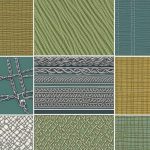Types Of Paintings
Painting is an art form that has been around for centuries. It involves the use of different mediums and techniques to create works of art that express emotions, tell stories, and capture the beauty of the world around us. There are many different types of paintings, each with its own unique style and characteristics.
Historical movements and styles have greatly influenced the development of painting as an art form. From the Renaissance to the Impressionist movement, each era brought with it new techniques and ideas that influenced the way artists created their works. Understanding the historical context of different types of paintings can help one appreciate the art form even more.
Key Takeaways
- Painting is an art form that has been around for centuries and involves the use of different mediums and techniques to create works of art.
- Historical movements and styles have greatly influenced the development of painting as an art form.
- Understanding the historical context of different types of paintings can help one appreciate the art form even more.
Historical Movements and Styles

Renaissance and Classicism
The Renaissance period marked a significant shift in the art world, with artists focusing on realism and perspective. This movement began in Italy during the 14th century and spread across Europe, lasting until the 17th century. Renaissance artists were inspired by classical Greek and Roman art and sought to emulate their style. The works of Michelangelo, Leonardo da Vinci, and Raphael are some of the most famous examples of Renaissance art.
Classicism, on the other hand, emerged during the 18th century as a reaction to the ornate and extravagant Baroque style. It emphasized simplicity, balance, and harmony, drawing inspiration from ancient Greek and Roman art. Classicism is characterized by its use of clean lines, symmetry, and proportion. Some of the most famous Classicism works include Jacques-Louis David’s “The Death of Marat” and Jean-Auguste-Dominique Ingres’ “La Grande Odalisque.”
Impressionism and Post-Impressionism
Impressionism emerged in France during the late 19th century as a reaction to the strict rules of Academic art. Impressionist artists such as Claude Monet, Pierre-Auguste Renoir, and Edgar Degas sought to capture the fleeting effects of light and color in their paintings. They used loose brushstrokes and bright colors to create the illusion of movement and atmosphere.
Post-Impressionism, which followed Impressionism, was a diverse movement that included artists such as Vincent van Gogh, Paul Cézanne, and Georges Seurat. These artists were interested in exploring the emotional and psychological effects of color and form. Post-Impressionist works are characterized by their use of bold colors, flattened forms, and expressive brushstrokes.
Modern Art Movements
The 20th century saw the emergence of many new art movements, including Cubism, Expressionism, Fauvism, Abstract Expressionism, and Contemporary Art. Cubism, which was developed by Pablo Picasso and Georges Braque, sought to represent objects from multiple perspectives at once. Expressionism, on the other hand, emphasized the emotional and psychological aspects of art, often using distorted forms and vivid colors to convey intense emotions.
Fauvism, which emerged in France during the early 20th century, was characterized by its use of bright, bold colors and simplified forms. Abstract Expressionism, which emerged in the United States during the mid-20th century, emphasized the spontaneous and intuitive aspects of art, often using large canvases and gestural brushstrokes.
Contemporary Art is a diverse and constantly evolving movement that includes a wide range of styles and techniques. It is characterized by its openness to experimentation and its willingness to challenge traditional artistic conventions. Some of the most famous contemporary artists include Jeff Koons, Damien Hirst, and Banksy.
Painting Mediums and Techniques
Painting mediums and techniques are the tools and methods that artists use to create their artworks. Different mediums have unique properties that affect the final outcome of the painting. Here are some of the most popular painting mediums and techniques used by artists:
Oil Painting
Oil painting is a popular medium that has been used by artists for centuries. It involves mixing pigments with oil, usually linseed oil, to create a thick and slow-drying paint. The slow drying time allows artists to work on their paintings for an extended period, making it ideal for creating detailed works of art. Oil paint can be applied in thin or thick layers, giving artists a wide range of possibilities when creating their artworks.
Acrylic Painting
Acrylic painting is a relatively new medium that has gained popularity in recent years. It involves mixing pigments with a water-based polymer to create a fast-drying paint. Acrylic paint can be applied in thin or thick layers, and it dries quickly, making it ideal for artists who want to work quickly or create multiple layers in a short period. Acrylic paint is also versatile and can be used on a variety of surfaces, including canvas, paper, and wood.
Watercolor Painting
Watercolor painting is a transparent medium that involves mixing pigments with water to create a paint that can be applied in thin layers. Watercolor painting is known for its luminosity and delicate washes of color. It is ideal for creating landscapes, portraits, and still-life paintings. Watercolor painting requires a delicate touch and a good understanding of color theory, making it a challenging medium for beginners.
Fresco and Encaustic Painting
Fresco and encaustic painting are ancient painting techniques that have been used for centuries. Fresco painting involves applying pigments to wet plaster, while encaustic painting involves mixing pigments with hot wax. Both techniques produce unique and durable artworks that have stood the test of time. These techniques require a good understanding of the materials and a delicate touch, making them challenging for beginners.
In addition to these painting mediums and techniques, there are many other painting mediums, such as tempera, that artists use to create their artworks. Each medium has its unique properties and requires a different set of skills and techniques to master. By experimenting with different mediums and techniques, artists can create unique and beautiful works of art.
Elements of Art in Paintings
Paintings are a form of art that can convey various emotions and messages through the use of different elements. The following subsections discuss some of the primary elements of art that are commonly used in paintings.
Color and Light
Color is one of the most essential elements of art in paintings. It can convey different emotions and moods, and it can also create a sense of harmony or contrast. In paintings, artists use different pigments to create colors. These pigments can be mixed to create different shades and tones. Moreover, the use of light in paintings can also affect the colors and create different effects. For instance, the use of light and shadow can create a sense of depth and volume in a painting.
Form and Space
Form and space are other important elements of art in paintings. Form refers to the three-dimensional nature of objects in a painting, while space refers to the area around and between these objects. In paintings, artists use different techniques to create a sense of form and space. For instance, they can use perspective to create a sense of depth and distance. They can also use overlapping shapes to create a sense of space and dimensionality.
Line and Texture
Line and texture are two other essential elements of art in paintings. Line refers to the marks made by an artist on a surface, while texture refers to the way a surface feels or appears to feel. In paintings, artists use different types of lines to create different effects. For instance, they can use thick, bold lines to create a sense of strength and power. They can also use thin, delicate lines to create a sense of fragility and delicacy. Texture, on the other hand, can add depth and interest to a painting. Artists can use different techniques to create texture, such as impasto, which involves applying paint thickly to create a three-dimensional effect.
In summary, paintings use various elements of art to convey different emotions and messages. The use of color and light, form and space, and line and texture are some of the essential elements that artists use to create paintings that are visually appealing and expressive.
Subject Matter and Composition
The subject matter and composition are two essential elements in the creation of a painting. The subject matter refers to the objects, scenes, or ideas that the artist depicts in the artwork. The composition, on the other hand, is the arrangement of these elements within the canvas.
Portraiture and Landscape
Portraiture and landscape are two common types of paintings that focus on the subject matter. Portraiture involves the depiction of a person or group of people, while landscape painting involves the representation of a natural environment, such as a forest or mountain range.
In portraiture, the artist must consider the subject’s features, clothing, and pose to create a realistic representation. In landscape painting, the artist must consider the perspective, lighting, and illusion of depth to create a realistic representation of the natural environment.
Abstract and Conceptual Art
Abstract and conceptual art are two types of paintings that focus on the composition rather than the subject matter. Abstract art involves the use of shapes, colors, and textures to create a non-representational image. Conceptual art involves the use of ideas and concepts to create an artwork.
In abstract art, the artist must consider the arrangement of shapes, colors, and textures to create a visually appealing composition. In conceptual art, the artist must consider the idea or concept behind the artwork and how to represent it visually.
Narrative and Decorative Arts
Narrative and decorative arts are two types of paintings that focus on both the subject matter and the composition. Narrative art involves the depiction of a story or event, while decorative art involves the use of patterns, designs, and colors to create a visually appealing artwork.
In narrative art, the artist must consider the subject matter and how to represent the story or event in a visually appealing way. In decorative art, the artist must consider the composition and how to use patterns, designs, and colors to create a visually appealing artwork.
Overall, the subject matter and composition are two essential elements in the creation of a painting. The artist must consider both elements to create a visually appealing and meaningful artwork.
Artistic Materials and Supports
Artistic materials and supports are the backbone of any painting. They can greatly influence the final outcome of a painting. In this section, we will discuss the different types of supports available for painting.
Canvas and Panel
Canvas and panel are the most common supports used by artists. Canvas is a woven fabric made of cotton, linen, or synthetic fibers. It is available in different textures and weights. Linen canvas is considered the best quality canvas due to its strength and longevity. Canvas can be stretched over a wooden frame or glued to a panel.
Panel is a rigid support made of wood, MDF, or hardboard. It is available in different thicknesses and can be primed or unprimed. Panel provides a smooth and stable surface for painting. It is ideal for detailed work and can be used for oil, acrylic, and tempera painting.
Paper and Alternative Materials
Paper is a versatile support used for watercolor, gouache, and ink painting. It is available in different weights and textures. Watercolor paper is the most commonly used paper for watercolor painting. It is made of 100% cotton and can be hot-pressed, cold-pressed, or rough. Gouache paper is similar to watercolor paper but has a smoother surface.
Alternative materials such as metal, glass, and plastic can also be used as supports for painting. Metal and glass provide a unique surface for painting and can be used for mixed media and collage. Plastic is a lightweight and durable support that is ideal for outdoor painting.
In addition to supports, pigments are also an important component of painting. Pigments are finely ground powders that provide color to paint. They are available in different colors and can be mixed to create new colors. Pigments can be natural or synthetic and can be used for oil, acrylic, and watercolor painting.
In conclusion, the choice of support and pigments can greatly influence the final outcome of a painting. Artists should experiment with different materials to find the ones that work best for their style and technique.






